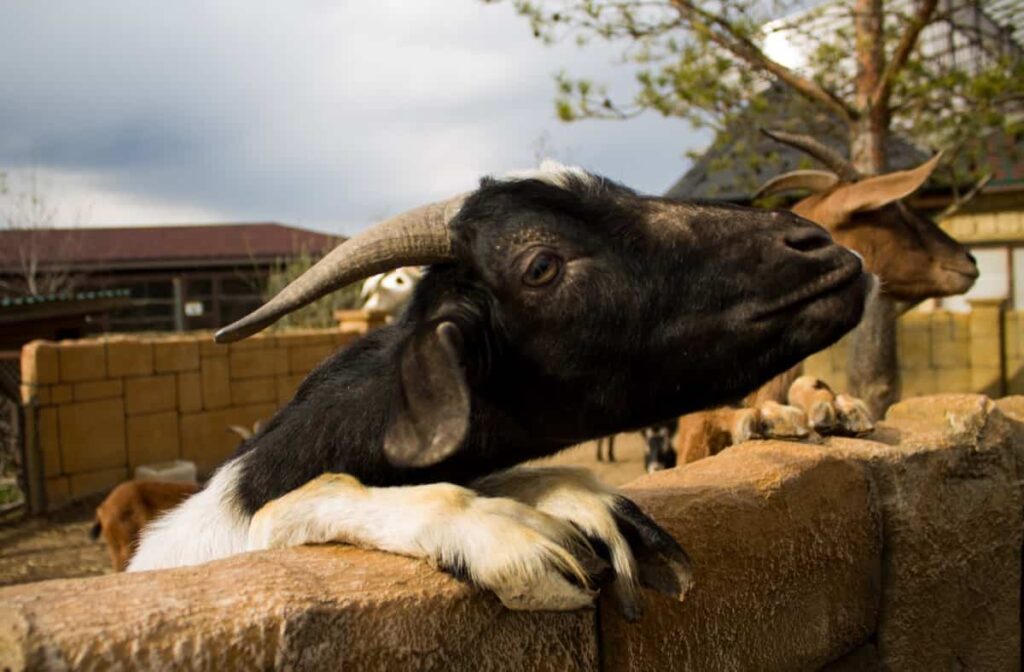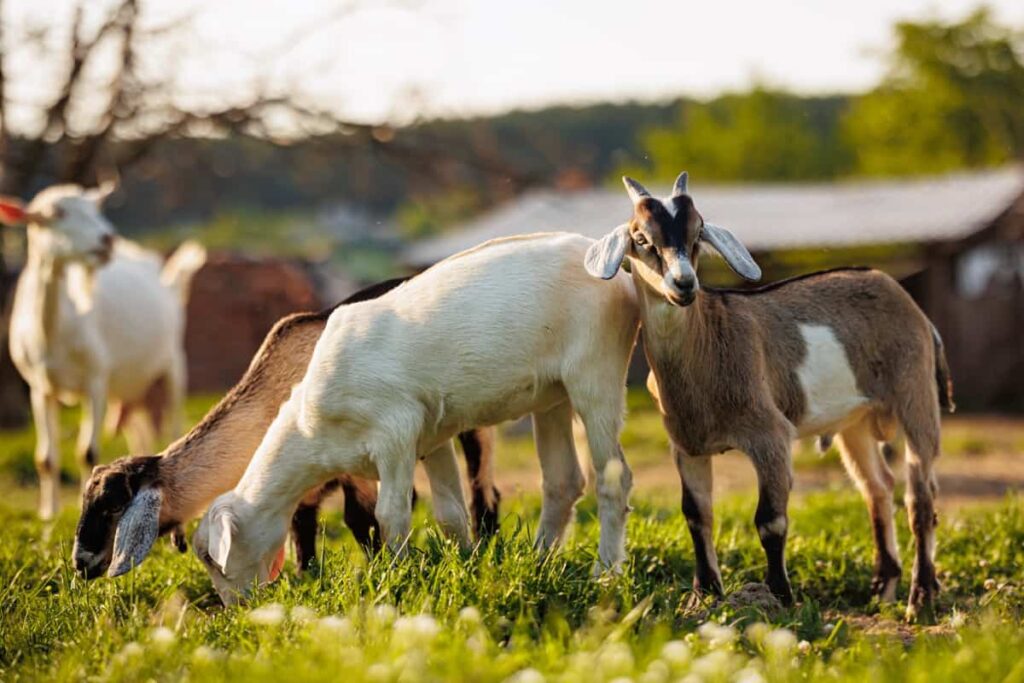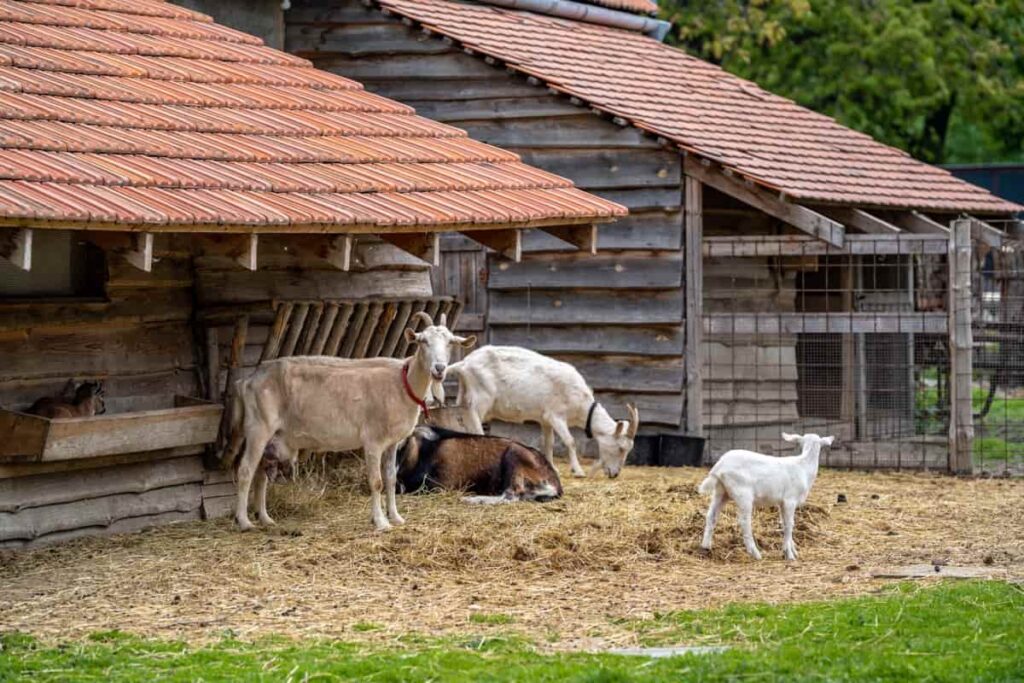This guide will help you learn all the tips, tricks, and best practices needed to raise goats on a small-scale or rural farm. Goat farming can be rewarding and profitable but requires proper planning, knowledge, and commitment in this guide, you will learn about the different breeds of goats, how to select and purchase them, their basic needs such as food, water, shelter, and healthcare, and how to manage their behavior and social interactions. Additionally, you will gain insight into the best practices for breeding, milking, and meat production and how to market and sell your goat products.

Small-Scale Rural Goat Farming
What Small-Scale and Rural Goat Farming?
Small-scale and rural goat farming is animal husbandry that involves raising goats for various purposes, such as meat, milk, and fiber production. It has become increasingly popular worldwide due to its low investment requirement and a high potential for profits. The demand for goat products has steadily increased, making it a viable business option for those interested in agriculture.
- Goat products include milk, meat, skin, manure, and fiber.
- Choose a product to specialize in based on demand and start on a small scale.
- Accommodation for goats should be comfortable, hygienic, and pest-free
- Goats require a healthy diet, and a grazing facility can provide quality food.
- Ensure access to clean water and keep a first-aid box for emergencies.
- Goat farming requires patience, love, and care; a veterinarian can provide valuable advice.
Can Goats Support Small and Marginal Farmers?
- Goats have been a reliable source of livelihood for small and marginal farmers in ecologically fragile areas in India for over 10,000 years, as they require low investment and have high and consistent returns.
- Goats can breed twice yearly and usually give birth to twins, making them prolific breeders and valuable for farmers.
- Goat rearing has enormous potential to increase incomes and improve nutrition for resource-poor households, especially in remote, tribal, and ecologically vulnerable areas.
- The share of livestock within the agriculture and allied sector increased from 18% to 23% between the early 1980s and 2009, as the contribution of the agriculture and allied sector to GDP declined from 55% to 21% over the same period.
- However, goat rearing depends heavily on grazing in shared resources, such as wastelands, common grazing lands, and forests, which are increasingly under pressure due to urbanization, encroachment, and land degradation.
- The second-largest livestock population in India has just 7.87% of its area as forest and 4.98% as permanent pastures and other grazing land, which makes it especially vulnerable.
- Shrinking grazing lands and a severe shortage of fodder pose a threat to the sustainability of goat rearing.
Getting Started with Small-Scale Goat Farming
- Before starting a small-scale goat farming business, decide what products you want to produce and sell based on market demand.
- Goat products include meat, milk, fiber, skin, and manure.
- Goat meat is in high demand globally, and goat milk is nutritious and easily digestible.
- Fiber production is possible with Cashmere and Angora goat breeds, while Black Bengal goats produce high-quality skin.
- Selecting the right breed for your production is crucial. Some best meat goat breeds are Black Bengal, Boer, and Kiko, while Alpine, Saanen, and Nigerian Dwarf are popular dairy goat breeds. Dual-purpose goat breeds include Nubian and Alpine.
- Common goat farming equipment includes fencing, shelter, feeding racks, water, and a manure handling bay. These can be purchased or DIY-ed.
- A good housing system is essential for keeping the goats healthy and disease-free. Separate houses for different types of goats are recommended.
- Investment in goat housing is fixed and can be used for several years. Consider the cost and benefits before making a decision.
In case you missed it: Transforming Agroforestry with the Power of Goats: A Guide to Successful Integration

Feeding and Care for Goats in Rural Goat Farming
- A standard-size goat should be offered 2-4 pounds of hay or natural forage daily.
- Legume-based hay is best for goats, but hay with some clover and alfalfa is also fine.
- Goats need enough roughage to keep their rumen functioning properly. Long-fiber hay is necessary for the bacteria-rich rumen to function.
- Chaffhaye, nutrient-rich hay mixed with probiotic culture and molasses, is an excellent supplement to traditional hay and grain feed in a goat’s diet.
- Grain feed should be regulated carefully to avoid overfeeding, which can cause potentially deadly bloat and colic.
- Goats should have access to mineral blocks year-round and a salt block, at least during warm weather months. Baking soda can also be used to help prevent bloat.
- Goats are ruminants and eat almost all crops, grains, and greens. Grazing places where goats can roam freely are ideal.
- Commercially prepared goat feed is highly nutritious but can be expensive. Mixing commercial feed with natural sources can reduce feeding costs.
Breeding and Reproduction in Small-Scale and Rural Goat Farming
- Goats are good breeders and breed easily if kept in a good ratio of bucks and do (Generally, one buck is enough for breeding 20-30 does). It is recommended to keep the breeding records in a notebook.
- Good health and care are necessary for goats. Goat farmers should maintain hygiene and contact a vet in case of any issues. Vaccinating goats on time is crucial. Taking extra care of breeding bucks, pregnant doe, nursing doe, and kids is essential.
- Before starting goat farming, certain factors need to be considered, including a budget, facilities available, products to be produced, market availability, grazing area, and interest.
- Personal attention and care are important; farmers should not depend on laborers.
- Goat breeding also needs proper management practices such as selecting the right breeding stock, maintaining a good breeding ratio, practicing good breeding management, monitoring pregnancy and birthing, keeping good record-keeping, and managing genetics and breeding practices.
- Proper goat care and management are essential. Goats should be fed with clean and fresh water and food. The shelter provided should be well-ventilated, dry, and protected from the elements.
- Separating kids, bucks, and does is important for commercial production. Goats should be vaccinated on time, and necessary vaccines and medicines should be stocked.
Best Tips and Tricks for Small-Scale and Rural Goat Farming
- There are several important tips for small-scale and rural goat farming. First, choose the right breed for your needs, whether for milk, meat, or fiber.
- Start small with two to three goats and build a sturdy fence to keep them secure. Provide adequate shelter, fresh water, and a balanced diet with hay, grains, and minerals.
- Keep their living space clean and monitor their health regularly. Socialize them and keep them away from predators and toxic plants.
- Plan for breeding and learn about kidding, providing proper veterinary care, and keeping records of their health and breeding history.
- Consider the cost and join a community for support and resources.
In case you missed it: Best Practices for Disease Prevention and Management in Goats: Strategies for Maintaining a Healthy Herd

Conclusion
With expertise and preparation, small-scale rural goat farming can be profitable. Goats may thrive and provide milk, meat, and fiber with proper care, breeding, and health monitoring. Be patient and persistent, and enjoy goat farming.
- Types of Grass Growing for Goat Farm
- How to Train Goats for Milking: A Beginners Guide
- Goat Milking Practices and Equipment: A Beginner’s Guide
- Goat Farming for Fiber: Producing Mohair and Cashmere
- Maximizing Goat Milk Production: Tips for Dairy Goat Farmers
- Goat Farming as a Family Business: Strategies for Success
- Profitable Kenya Goat Breeds for Commercial Dairy and Meat Business
- Unlock the Secrets of Oberhasli Goat: Discover Raising and Management Practices
- Ultimate Guide to Myotonic Goats: Explore Profile to Raising
I would like to start goat farming in near future. I would like to keep in touch with all necessary information for goat farming for my future endeavors.
Kindly advise if you can leave a ram with the female goats through the year or do you have to seperate them from time to time.
When will be the best times to put your ram with the hosts and for how long should the ram stays with the female goats.